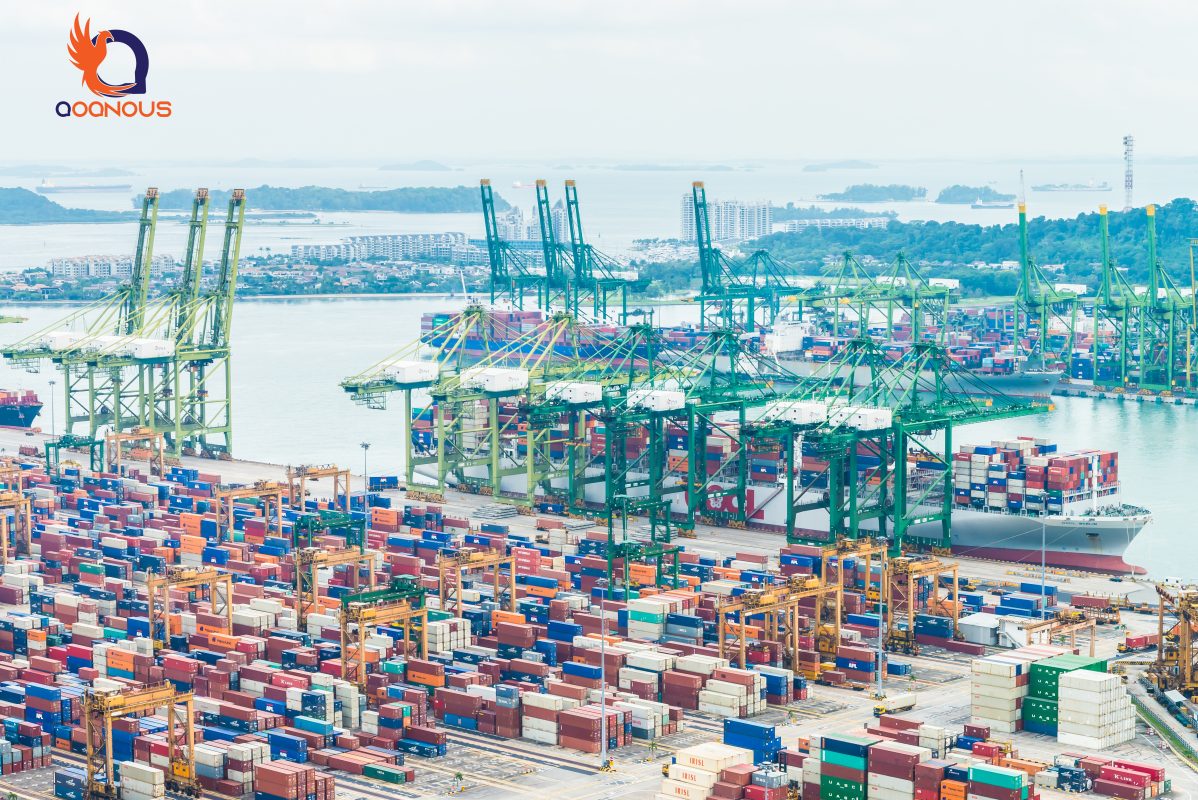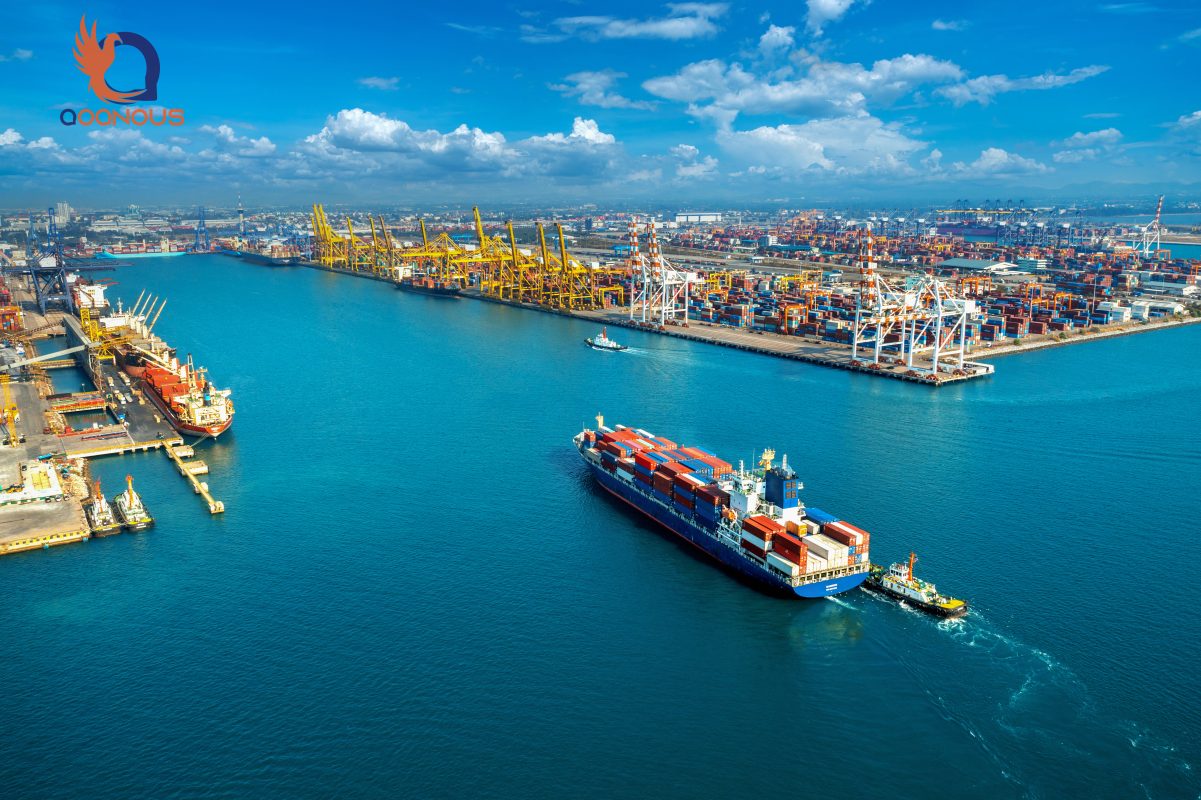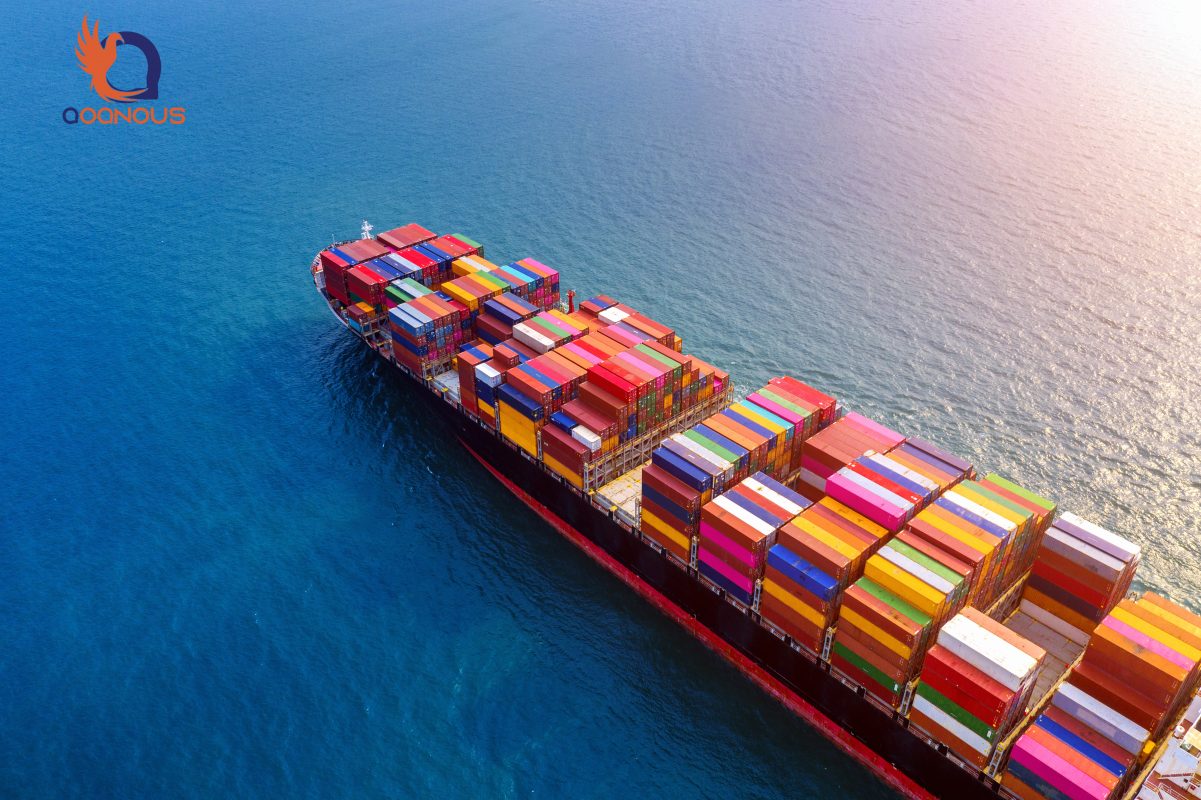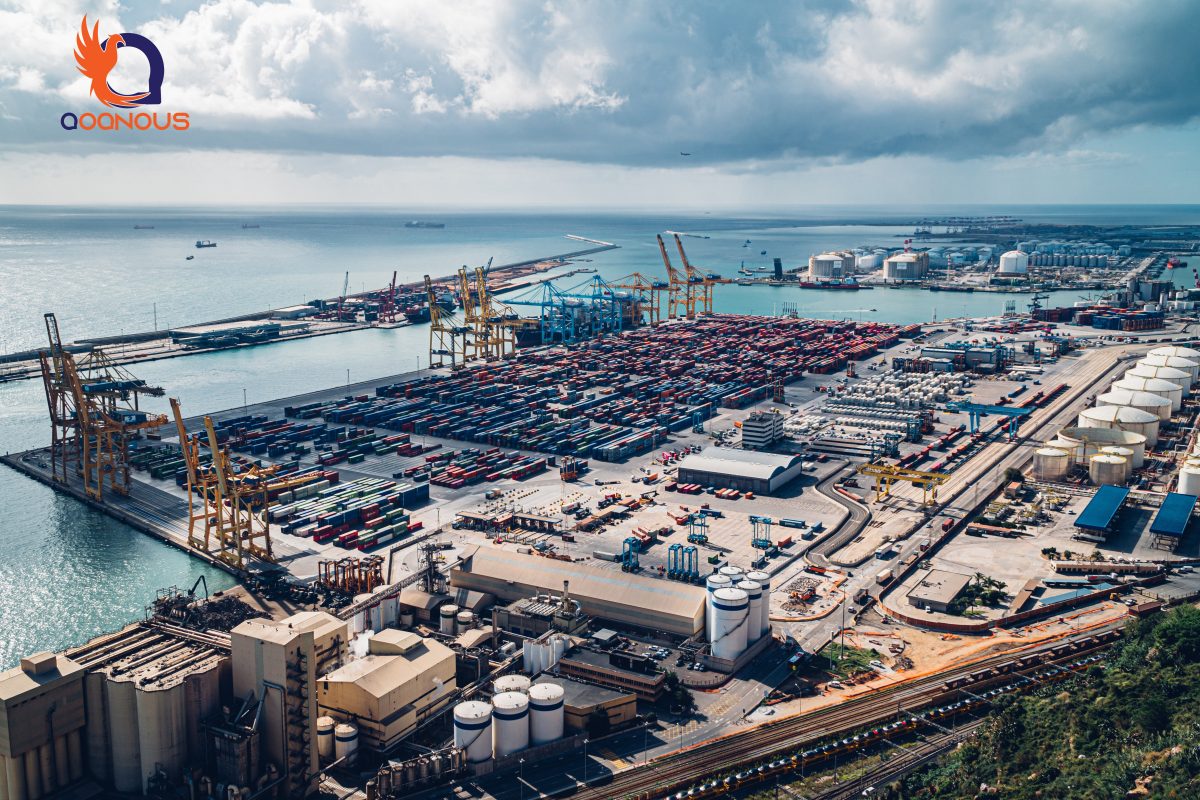What is the export of goods?
Head of content
Export of goods, which is one of the two main pillars of international trade, which basically means the sale of goods or services of domestic production to a foreign country in exchange for foreign exchange. In fact, for a more precise definition, export can be considered the opposite of import.
Exporting goods is one of the most important economic activities that have been carried out since a long time for the development and economic prosperity of countries. The process of exporting goods is carried out based on certain rules and regulations, which are referred to as the stages of exporting goods, so before entering into the discussion of the stages of exporting goods, we must first be fully familiar with exporting goods, types of export, and the rules and regulations of exporting goods. To avoid any possible problems and losses.
If you are active in the field of commerce, trade and export of goods or you are interested in this field, stay with us until the end of this article to review the rules and procedures of exporting goods to different countries.
Qoqnous Trading Company operates with more than 10 years of successful practical experience in all fields of international trade, such as import goods, exporting goods, and customs clearance, and you can entrust zero to one hundred stages of goods export to Qoqnous Trading.
History of trade and export of goods
The studies conducted in the history of trade and commerce express the fact that the initial roots of export go back to one hundred and fifty thousand years ago, when there was still no paper money and exchanges were made in the form of goods for goods. Only knowledge of this history is enough to understand the colorful role of commodity exports in the growth of small and large economies. Therefore, today the economic policy makers have focused on increasing the export of goods and capturing the global markets in order to achieve the highest economic growth as quickly as possible.
If you are one of those producers who haven’t thought about exporting your goods and services yet; I ask you to think a little about this sentence:
“Only one percent of people who need your goods and services live within the borders of this country”
If after reading this sentence you got enthusiasm and decided to become one of the top exporters of the country, I recommend that you stay with us until the end of this article so that we can review the zero to hundred steps of exporting goods together.


The role of commodity exports in the economic growth of countries
In today’s modern world, where the global web platform has made it easy to access any kind of information, there is hardly anyone who denies the role of exports on the economic growth of countries. Economic growth is also the only way to eradicate problems such as poverty, unemployment, inflation and inappropriate distribution of income. Therefore, we must open the gates of world trade with a double motivation and knowledge of the principles and techniques of marketing and respect the rules and protocols of export and customs, and give a new life to the country’s economic cycle in the situation of recession.
Various methods of exporting goods
There are different ways to export goods, which we will review briefly.
Definite export of goods
The export of various types of goods outside the borders of the country for sale and use is called definite export of goods.
Temporary export of goods
Sending goods abroad to participate in international exhibitions is called temporary export of goods. If the goods are not sold in the international exhibition and the goods are returned to the country, the import is done easily and without customs procedures.
In order to obtain a temporary export permit, the exporter must pay an amount as a deposit to the customs, and if the goods are returned to the country, the paid fee will be refunded.
Method of direct export of goods
In the direct export method, the exporter, who can be an individual or a company, performs all the steps of exporting goods directly and without intermediaries. Usually, novices and newly founded companies export goods in a direct way at the beginning of their work. Direct export has advantages and disadvantages that we will mention below.
Advantages of the method of direct export of goods
More profit: in the direct export method, due to the absence of intermediaries, the profit from exporting goods is more.
Creating business connections: In this method, after a short period of time, you will get to know businessmen and businessmen inside and outside the country, and more and stronger business connections will be created.
Learning the stages of exporting goods: during several stages of exporting, you will learn the ins and outs of the work in a direct way, and you will do all the stages of exporting goods easily and without intermediaries, and you will gain the ability to work in all areas of export.
Disadvantages of the method of direct export of goods
Exporting goods directly, although it will introduce you to all the stages of exporting goods, but it also has disadvantages that we will explain.
- Spending more money: Despite earning more profit in the direct method, the side costs also go up. In this method, you have to create an export department and hire human resources to carry out the steps of exporting goods. Also, sometimes the need to be in a foreign country and pay additional fees will be added to this process.
- Spending more time: In this unwanted method, more time will be spent on exporting goods and obtaining legal permits from relevant organizations.
Method of indirect export of goods
In this method, an intermediary is used to carry out the export process, and the steps of exporting goods are carried out by commercial companies, so during a contract, a person or company entrusts the process of exporting goods to an active trading company. In the indirect method of exporting goods, obtaining the necessary permits and sometimes marketing the export products is the responsibility of the trading company, and the profit obtained from the export is divided by agreement between the exporter and the intermediary.
Advantages of indirect export of goods
Cost savings: In the indirect method, there is no need to create an export department, the cost of hiring labor, the cost of foreign travel, so the side costs are reduced to a great extent.
Saving time: due to the routineness of the route and complete familiarity with the steps of exporting goods, the steps of clearing goods and not needing to obtain some permits, the time spent exporting goods is significantly reduced.
Use of intermediary’s background and experiences: being in contact with a business with a background and expertise, over time will increase your experience and knowledge in the field of exporting goods.
Disadvantages of the method of indirect export of goods
Lack of direct contact with the customer: In order to carry out the process and steps of exporting goods through an intermediary, the exporter will not be in direct contact with foreign buyers and merchants.
Lack of control over the price: determining the price of the export product is the responsibility of the intermediary or the trading company, and you will not have control over the price.
Earning less profit: In the indirect export method, a part of the export profit is awarded to the intermediary according to the contract and agreement of the parties. Therefore, the profit from export in the indirect method will be lower than the direct method.


Classification of export goods
According to the export license, export goods are classified into three categories:
- Authorized goods
- Conditional goods
- Prohibited goods
Authorized export goods
Allowed export goods will not need to obtain licenses such as health organization certificate, standard organization certificate, etc.
Conditional export goods
Goods whose export is carried out under special conditions and need to obtain a license from the relevant organizations are included in this category. After the declaration and necessary permits are issued, the steps of exporting the goods are carried out and there is no need to visit in person.
Prohibited goods
Goods whose export has been declared prohibited by the country of origin or destination due to special conditions are included in this category.
The stages of exporting goods from zero to one hundred
Now, after the initial understanding of the rules and conditions of exporting goods, it is time to explain the steps of exporting goods. If you intend to become an exporter, always remember that exporting, like any other business activity, is a long-term process and requires patience and, most importantly, careful planning. In the following, we will review the steps of exporting goods step by step. Achieving success in exporting depends on going through each of these steps completely.
The first step of exporting goods: checking global markets and finding customers
Examining global markets is always the most important step in the process of exporting goods because this step lays the foundation for a successful and profitable export. Be careful that knowing all the details of the target market will provide you with the key to the success of foreign trade. This step requires more time, more cost and high sensitivity. Therefore, if you do not know the foreign market of your products and you do not have enough expertise in the field of obtaining information and understanding global markets, entrust this process to Qoqnous Trading without worrying and wasting time and money.
The second step of exporting goods: determining the optimal export strategy according to the type of product
Checking what needs your product will meet in the global markets is the second most important step of the product export process that you must take before starting the export process. The type of strategy you choose will greatly affect the export performance of products, and exporting goods without having sufficient knowledge will cause the loss of your capital. Therefore, after you have brought your domestic business to relative stability and gained a good position in the domestic markets, you can go to the foreign markets and compete with your foreign competitors.
In the stage of determining the strategy (Business Plan), in addition to fully understanding the needs and markets of foreign countries, it is necessary to have a complete strategy for how to supply the export goods, how to price the goods, how to market the goods in the destination country, and check the required initial capital. and arrange the cost estimate. Determining the export strategy is very effective in accelerating the export process and reducing costs.
The third step of exporting goods: getting a commercial card
For any international business activity, including import and export, you are required to get a business card. For this purpose, you must go to one of the branches of the Iranian chambers of commerce to complete the form and submit the documents and request the issuance of a commercial card.
The fourth step of exporting goods: Obtaining the necessary permits and standards from relevant organizations
Obtaining permission from various organizations and bodies is another step in exporting goods, without which you will not be able to export any goods. Depending on the product that you intend to export, the licenses and standards that you need to obtain also change, for example, some goods need to obtain a license from the Health and Standards Organization. Note that these permits can be different based on the destination country.
The fifth step of exporting goods: setting up and sending the certificate of origin to the customer
The certificate of origin is issued for the buyer to present to the organizations and institutions of his country so that he does not face problems if needed. This certificate specifies the country of manufacture of the goods and the type of exported goods. Basically, the certificate of origin is a sales invoice that has been approved by the Chamber of Commerce.
The sixth step of the product export process: packing the export product
At this stage, the export product is packed according to factors such as weather conditions, how to agree with the customer, customs rules and regulations and standards of the country of origin.
The seventh step of exporting goods: performing customs formalities
Carrying out customs formalities includes submitting the necessary documents such as: customs declaration, determination of the customs value of the goods, transport contract, insurance policy, goods inspection certificate, certificate of origin and as a result receiving confirmations related to the export of goods from the customs.
The eighth step of exporting goods: loading and sending goods
Loading and sending the goods is the last step of the export process. Exported goods are sent by air transportation, sea transportation, land transportation, or rail transportation according to the type of goods and destination country.
Necessary documents to prepare export goods declaration
The following information is required in preparing the customs declaration:
- Complete details of the buyer
- country of origin
- destination country
- Details of the exporter
- Details of the product declarant
- Terms of the transaction according to the contract
- Determine the shipping method
- Product specifications such as: type of product, customs tariff, weight, number, amount and customs value
- Cargo specifications such as: package type, quantity, mark, net and gross weight
- The name of the customs office where the declaration was submitted and the number and details of the declaration registration in the customs office
Necessary documents for exporting goods
- Proforma Invoice
- bill of lading
- Certificate of origin
- Commercial invoice
- Customs Export Declaration
- Customs warehouse receipt
- Export license inspection certificate
- Certificate Insurance
- Certificate Packing list
Best export products and the most important export destinations of Iran:
With its natural resources and high production potential, Iran can become one of the largest sources of goods exports in the region, but nevertheless, as you know, crude oil and petroleum products such as ethylene, acrylic alcohol and refined petroleum products are the most have allocated Iran’s export share. This issue, i.e. single-product exports, has made Iran’s economy vulnerable to crises and changes. Therefore, for the economic growth of ourselves and our country, we should think about the distant horizons with a double effort and try to gain our place in the world markets.
China is the most important country that has trade relations with Iran, and a huge part of Iran’s goods are exported to this vast country. After China, the neighboring countries such as Iraq, United Arab Emirates, Turkey and Afghanistan are the countries that import the most goods from Iran.
What are the most profitable export goods?
The best goods to export are those that allow for greater profitability. Although it is not possible to assign the word profitable or unprofitable to a product, but based on the statistics and results obtained from the studies conducted in relation to more profitability in the field of export, exclusive goods and also items for which the global price has been fixed and specified. they do not have, in case of issuance, they bring the highest interest rate.
To better understand this issue, it is enough to consider this simple example, many people think that the export of products such as pistachio or saffron is much more profitable than other products, while this is not the case; Because the global price of goods such as saffron and pistachio is known and relatively fixed, foreign buyers are also aware of these prices. As a result, the profit margin obtained for the export of such goods is always constant. But goods such as decorative stones, petrochemical products, minerals, metals, agricultural products and industrial products are among those products that will bring a lot of profit from their export.


How to become an exporter?
Well, until this part of the article, we got to know a little about the stages of exporting goods, the role of exports in the economic growth of countries, the main export destinations of Iran and some of the best export goods of the country. First of all, we consider it necessary to point out that in all commercial processes, including export and import, it is very important to know the principles and rules and to implement them carefully, because non-compliance with the rules can lead to many harmful problems. will follow. Therefore, if you are not familiar enough with business laws, it is better to leave these serious matters to competent and capable people and enjoy a profitable and safe business.
Qoqnous Trading, with more than a decade of continuous activity in the field of international trade, has come to respond to the needs of merchants, businessmen, production units, and all business actors. You can leave zero to one hundred steps of exporting goods to us and do your other activities with peace of mind. By taking a step beyond other competitors, Qoqnous Trading also undertakes the marketing of your product abroad. To receive more information or to receive advice in all marketing fields, to determine the best export strategy and currency transfers resulting from the sale of goods, contact Qoqnous business experts through communication channels.
What are the advantages and disadvantages of exporting goods?
Today, many people and companies export their products and services to different countries, which improves relations and economic growth of the country. Exporting goods has advantages and disadvantages. In the future, stay with Qoqnous to examine the advantages and disadvantages of exporting.
Advantages of exporting goods
- Reduce production costs
- Ability to compete in global markets
- Increase target market share
- Increasing the quality of manufactured products
- Increase in profit from the sale of goods
- Global branding and competition with foreign brands
- Importing foreign currency and circulating the cycle of the country’s economy
Disadvantages of exporting goods
- Hard work and creating problems in the field of export for companies and small businesses
- The occurrence of problems in the field of export due to the existence of cultural differences
- Lack of after-sales service for foreign buyers
Some companies, despite being fully aware of the disadvantages and risks of exporting goods and also knowing the complexity of the export process, are still trying to export their products because they consider the benefits and advantages of exporting goods to be superior to its risks and disadvantages.


Tariffs for the export of goods
Export tariff, which is called customs duty, is a duty that the government collects from exporters to protect the export goods. Export tariffs are one of the most important stages of exporting goods.
The export tariff is divided into several categories based on the type of export:
Ad valorem tariff: Ad valorem tariff is calculated based on the value of exported goods.
Fixed tariff: The method of calculating the fixed tariff is based on the weight of the exported goods.
Composite tariff: Composite tariff is calculated from the combination of value and fixed tariff.
Column tariff: The tariff of one column is calculated in the same way for all goods. In the two-column tariff, two types of tariffs are considered for each product.
Individuals and companies active in the field of commerce and international trade should be familiar with all export tariffs and rules and regulations so that they can easily carry out the steps of exporting goods.
What are the risks of exporting goods?
We all know that the export of goods is done in order to improve the economic situation and circulate the economic cycle. Although the international trade environment has changed a lot in recent years, exporters always face risks in selling their services and products. Export risks include:
- Political risk
- Legal risk
- Risk of non-payment
- Transportation risk
- Exchange rate risk
In order to identify and minimize the risks in the export sector, the following should be taken care of:
Choosing the field of activity and determining the strategy, choosing the destination country, receiving advice on banking and currency affairs, receiving legal advice, receiving insurance advice, choosing the best method of transportation and most importantly choosing an experienced and expert trading company to carry out the export process. Customs affairs and goods clearance. You can leave all the steps of exporting goods to Qoqnous Trading without the slightest worry.
Frequently asked questions about exporting goods
What is the export of goods?
Export means the departure of goods from the borders of a country to be sold in a foreign country in exchange for foreign currency, which is the opposite of import.
What are the stages of exporting goods?
Examining global markets, determining the export strategy, obtaining a commercial card, obtaining licenses and necessary standards for export, obtaining a certificate of origin, packing goods, performing customs formalities, loading and shipping.
To which countries is Qoqnous commercial activity in the field of exporting goods?
Exporting goods to Europe, exporting goods to China, exporting goods to Turkey, exporting goods to Iraq, exporting goods to Russia



